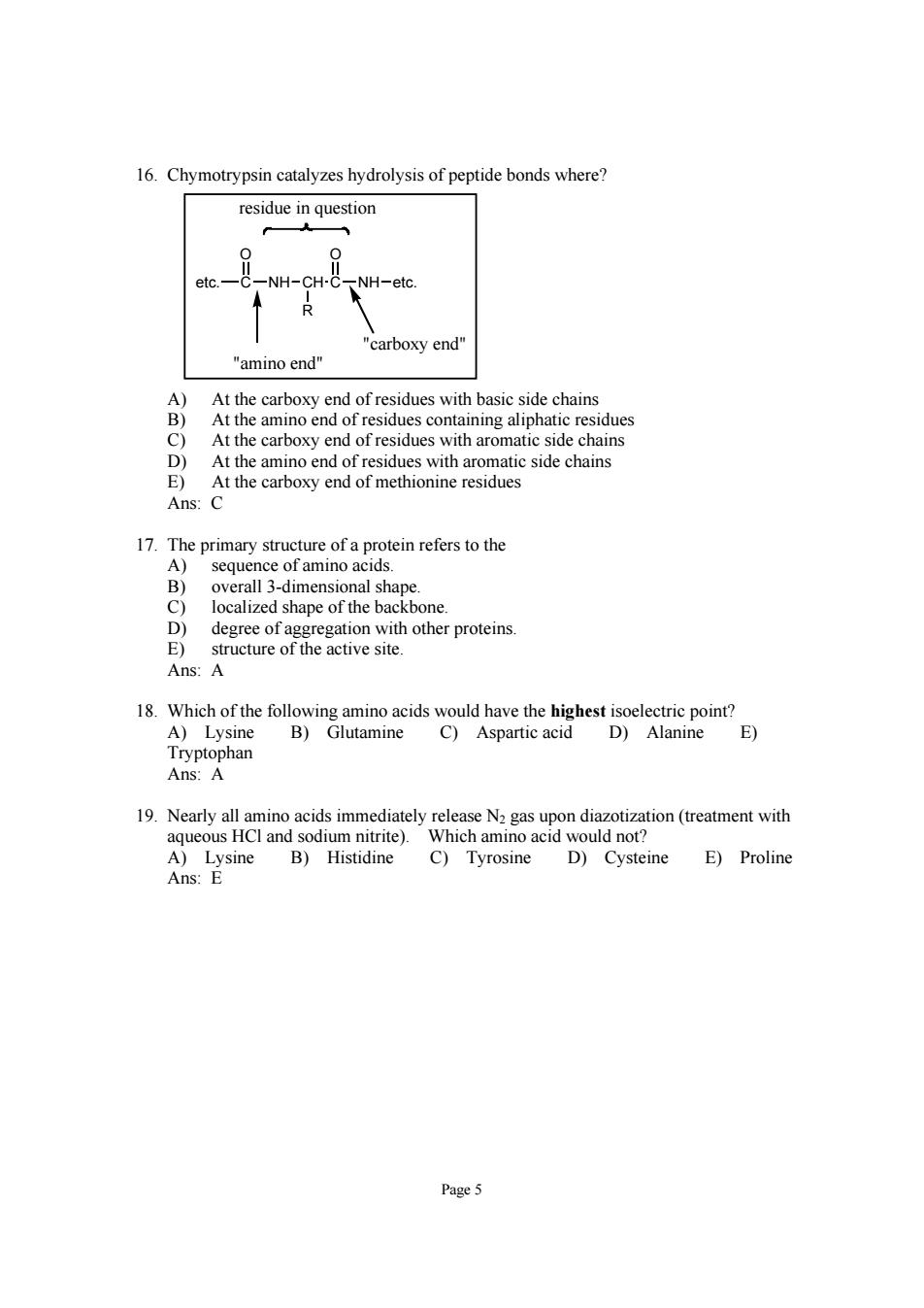正在加载图片...

16.Chymotrypsin catalyzes hydrolysis of peptide bonds where? residue in question 0 0 NU-CL NH-etc "carboxy end" "amino end" A)At the carboxy end of residues with basic side chains At the of re dues w ith aromatic es with aromat Ans:C 17.The primary structure of a protein refers to the A) sequence of amino acids. one degree of 18.Which of the following amino acids would have the highest isoelectric point? A)Lysine B)Glutamine C)Aspartic acid D)Alanine E) Tryptophan Ans:A 19.Nearly all a A Lysine B)Histidine C)Tyrosine D)Cysteine E)Proline Ans:E Page5Page 5 16. Chymotrypsin catalyzes hydrolysis of peptide bonds where? etc. C NH CH C NH etc. O O R residue in question "amino end" "carboxy end" A) At the carboxy end of residues with basic side chains B) At the amino end of residues containing aliphatic residues C) At the carboxy end of residues with aromatic side chains D) At the amino end of residues with aromatic side chains E) At the carboxy end of methionine residues Ans: C 17. The primary structure of a protein refers to the A) sequence of amino acids. B) overall 3-dimensional shape. C) localized shape of the backbone. D) degree of aggregation with other proteins. E) structure of the active site. Ans: A 18. Which of the following amino acids would have the highest isoelectric point? A) Lysine B) Glutamine C) Aspartic acid D) Alanine E) Tryptophan Ans: A 19. Nearly all amino acids immediately release N2 gas upon diazotization (treatment with aqueous HCl and sodium nitrite). Which amino acid would not? A) Lysine B) Histidine C) Tyrosine D) Cysteine E) Proline Ans: E